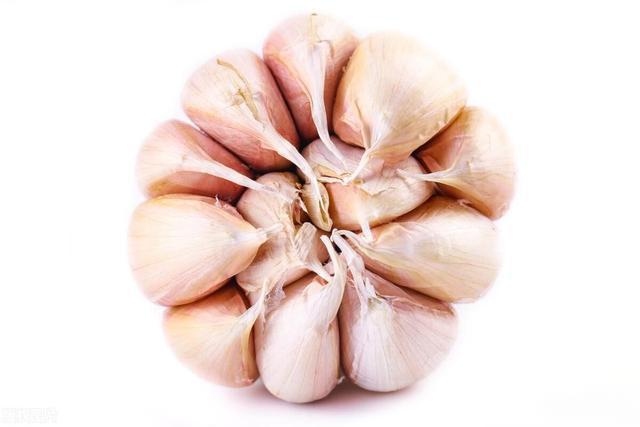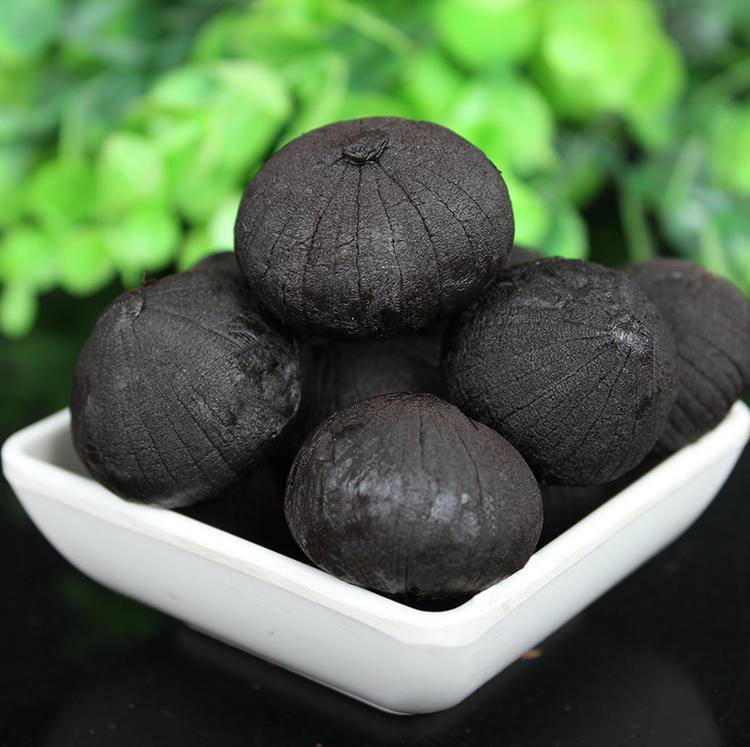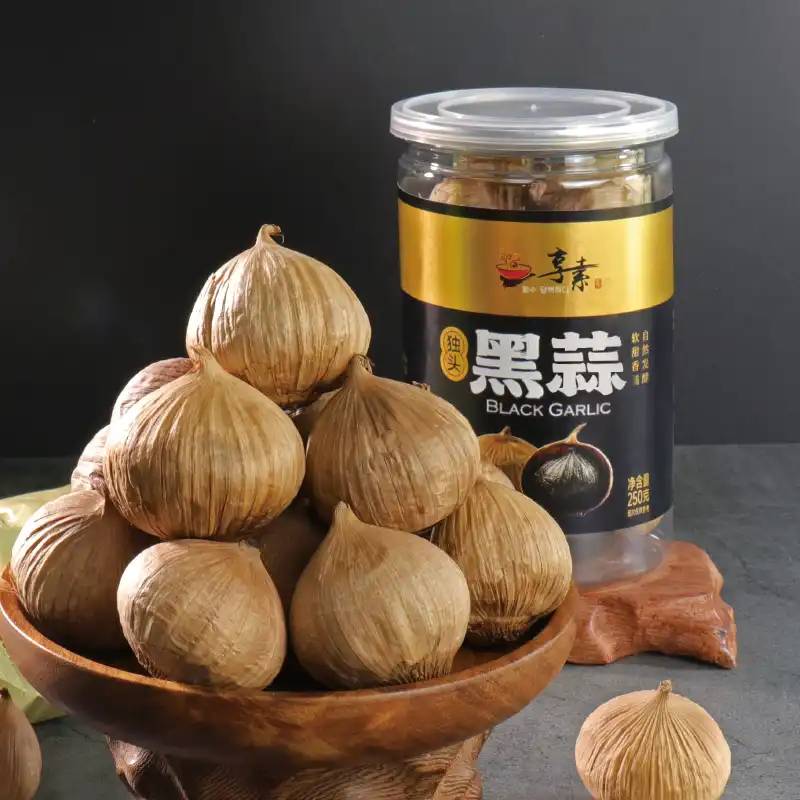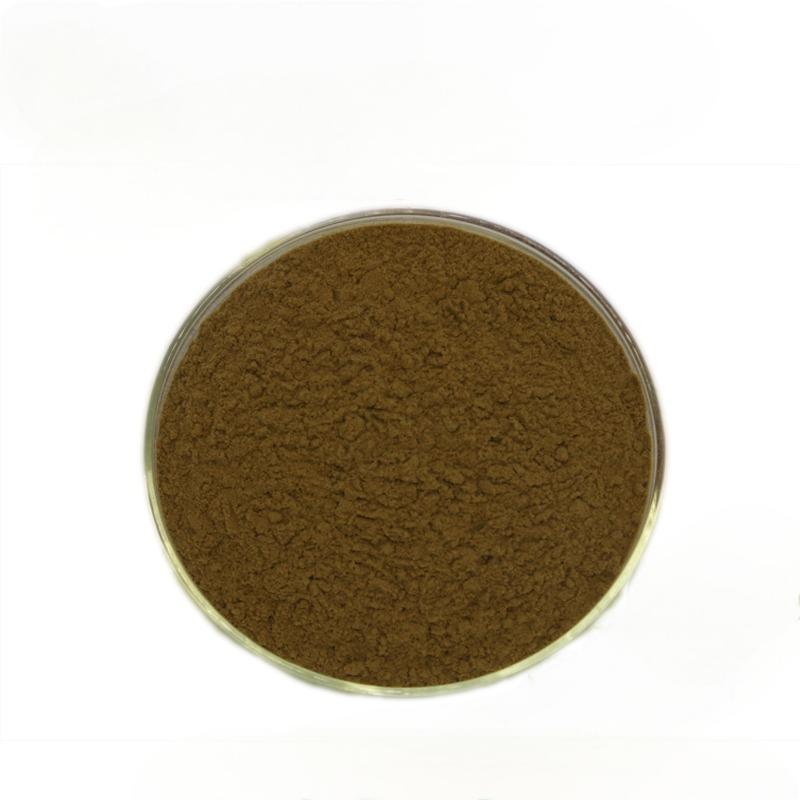黒ニンニクを処理する方法?
Garlic is rich in nutrients, but its pungent flavor can cause gastrointestinal discomfort, which severely restricts the ニンニクconsumer market [1]。 Therefore, research on different forms のdeep processing technology for garlic is needed to minimize the garlic odor とimprove its market competitiveness. Black garlic is an aged garlic product obtained by subjecting fresh garlic to a Maillard reaction at high temperatures (60–90 °C) and high humidity (70%–90%) [2]. It is currently one of the fastest growing and most researched health-promoting deep-processed garlic foods. During the reaction, the pungent odor, nutritional composition, and sensory 文化財of fresh garlic all change, and new functional substances are produced [1]. This paper provides an overview of the current research progress in the processing technology, key regulatory factors, and nutritional composition of 黒garlic, with the aim of providing theoretical support for the industrial development of black garlic.

1 Processing technology of black garlic
黒ニンニクは、酵素分解、熟成、乾燥などの一連のプロセスによって生成される。その加工技術には、主に発酵(固体発酵、液体発酵)と高温高圧での非発酵の2種類があります。発酵した黒ニンニクの処理中に、酵素的および非酵素的反応(メイラード反応)が細胞内で起こり、独特の外観と風味が得られる[3]。高温多湿の環境では、ニンニクの酵素活性が活性化され、炭水化物はフルクトースに、タンパク質はアミノ酸に分解される。一方、アリシンはs-アリルグルタチオンなどのアミノ酸に変換され、ニンニクの辛味や辛味を和らげます[3]。メイラード反応は黒ニンニクの処理において重要な反応である。炭水化物とアミノ酸やタンパク質との一連の複雑な反応によって、フェオメラニンと呼ばれる褐色-黒色の高分子物質が生成され、黒色ニンニクに独特の色と風味を与える[4-5]。
1.1発酵方式
Solid-state fermentation is currently the most widely used processing technique for preparing black garlic. The main process flow of solid-state fermentation is as follows: select high-quality garlic → peel and remove the first 1–2 layers of the stem → wash → ferment at high temperature and humidity → package → quality inspection → finished product. This process ensures the integrity of the garlic and inhibits the loss of nutrients in the garlic, resulting in high-quality black garlic.
液体発酵とは、粉砕したニンニクを適量の水に基質として加え、気密性の高い容器で発酵させる方法です。液体発酵のプロセスフローは、選択ニンニク→皮むき洗浄→破砕→真空密閉発酵→乾燥→梱包→品質検査→完成品となる。液体発酵プロセスでは、水の添加、密閉、発酵中の温度変化により、加工時間が短縮され、生産効率が向上します。同時に、黒ニンニクの栄養素含有量を増加させ、その栄養価と味を向上させます。
120 Non-fermentation方法
非発酵法は、黒ニンニクの新たな生産プロセスである。加工の流れは、高品質ニンニクの選択→洗浄→高温高圧でのスチーム→乾燥→黒ニンニク。非発酵黒ニンニク処理方法は、操作が簡単で、処理時間が短く、生産効率が高く、生産エネルギー消費が低い。また、非発酵黒ニンニク加工法は、黒ニンニクの栄養価を向上させます。

黒ニンニクの品質に影響を与える2要因
2.1ニンニク原料の品質
The nutritional composition of garlic is affected by factors such as species, geographical location, and growing environment. Studies have found that the nutritional content of soluble sugars, 水溶性タンパク質, allicin, and selenium in 58 types of garlic from different origins in China varies significantly [6]. The nutritional quality of garlic directly determines the quality of black garlic [7]. In addition, studies have found that the quality of black garlic is also directly affected by the number of cloves in a single garlic bulb, and is closely related to its 抗酸化capacity.
2.2前処理
黒ニンニクにニンニクを調製するための前処理プロセスは、黒ニンニクの品質と栄養価に大きな影響を与える。現在、ニンニクの主な前処理プロセスは、低温凍結、超高圧、マイクロ波法である。
2.3温度
温度は黒ニンニクの品質に影響を与える重要な要因の1つです。高温になると褐変が促進され、発酵期間が短くなり、酸とフェノールの含有量が増加する。しかし、過度に高温になると、最終製品の感覚品質が低下する可能性があります。そのため、70℃が最も適切な処理温度であると考えられている。この温度で加工された黒ニンニクは、色が均一で、食感が繊細で、甘酸っぱい[8]。
2.4相対湿度
黒ニンニクの処理において、相対湿度は重要なプロセスパラメータであり、その感覚品質、栄養組成および生物学的活性に影響を与える[7]。湿度が高いほど、ブラウニングが遅くなり、製品が濡れて甘くなり、有機酸の含有量が低くなります。しかし、ポリフェノールや還元糖の含有量は増加します。湿度は、高分子物質の加水分解や高温での非酵素的な褐変反応と密接に関係しています。湿度が高いと、ニンニクの多糖類とポリフェノールが高温で加水分解され、還元糖と小分子フェノールが高濃度に生成される[8]。さらに、メイラード反応の速度は相対湿度と密接に関係している。湿度が高いと、メイラード反応の速度が低下し、黒ニンニクの還元糖と遊離アミノ酸の含有量が増加します[9]。

3 黒ニンニク栄養素
ニンニクが黒ニンニクに加工されると、水分量が大幅に減少し、化学組成が変化する。例えば、炭水化物、タンパク質、ポリフェノールなどの化合物の含有量が増加する一方で、5-ヒドロキシメチルフルフラールやメラノイジンなどの新しい物質が生成され、栄養価や生理活性が向上します。
3.1炭水化物
ニンニクは炭水化物が豊富で、新鮮な体重の22 ~ 26%、乾燥体重の77%を占める。主に多糖類と少量のオリゴ糖と単糖から構成されている[9]。新鮮なニンニクと黒ニンニクの炭水化物には大きな違いがあります。例えば、ニンニクのフルクタンは徐々に単糖(ブドウ糖とフルクトース)、二糖、オリゴ糖に分解される[10]。黒ニンニクの甘さは、主にフルクトースによるものであり、黒は主にフルクトース/グルコースとアミノ酸のメイラード反応によるものである。
3.2タンパク質
ニンニクは、新鮮な重量で1.5%から2.1%、乾燥重量で14%から19%のタンパク質を含み、レクチンが最も豊富である。ニンニクには必須アミノ酸も多く含まれており、主にグルタミン酸(2.86 g・kg-1)、アルギニン(4.09 g・kg-1) (409 mg/100 g)、アスパラギン酸(0.90 g・kg-1)、チロシン(4.49 g・kg-1)である。高温多湿の環境でニンニクから黒ニンニクへの調製中にタンパク質が変性し、一部の遊離アミノ酸がメイラード反応に関与することがある。陸曉明[11]によると、処理中に18種類の遊離アミノ酸の総量が変化した(ニンニク:19.43 g・kg-1;黒ニンニク:14.86 g・kg-1)、いくつかの遊離アミノ酸(ロイシン、イソロイシン、フェニルアラニン、アスパラギン酸、アラニン、システインおよびバリンを含む)の含有量が増加し、他のアミノ酸(リシン、トリプトファン、メチオニン、チロシン、プロリン、アルギニン、トレオニン、ヒスチジン、グリシン、セリンおよびグルタミン酸)の含有量が減少する。
3.3脂質
新鮮なニンニクと黒ニンニクの脂質は、その感覚特性において重要な調節的役割を果たしており、栄養素とエネルギー源としても機能している。統計によると、新鮮なニンニクの脂質含有量は、新鮮重量で0.31%から0.53%、乾燥重量で0.6%である。黒ニンニクの処理中に、脂質は酸化し、一連の化学反応に関与し、脂質含有量の変化をもたらす。 しかし、黒ニンニクの加工中の脂質変化の傾向に関する報告は一貫性がなく、議論の的となっている。例えば、choiら[12]は、新鮮なニンニクから黒ニンニクへの加工中に粗脂質含有量が0.18%から0.58%に増加したことを発見した。
しかし、呂暁明[11]は、黒ニンニクの処理中に粗脂肪含有量が有意に減少していることを発見しました(ニンニク:0.33%;黒ニンニク:0.16%)。これらの違いは、ニンニクの品種、加工技術、抽出・分析方法などに関係している可能性があります。高温(50 - 90°c)、高湿度(60 - 90%)で処理されると、脂質は加水分解と酸化反応を受け、アルコール、アルデヒド、ケトン、ラクトンなどの一連の化合物を生成する。これらの生成物と最初に生成された脂肪酸は、加水分解、酸化およびメイラード反応を含む一連の複雑な化学反応に相乗的に関与します。
3.4 Polyphenolic化合物
According to statistics, the dry weight of phenolic compounds in fresh garlic is 3 to 11 g·kg-1, with an average content of 6.5 g·kg-1 [9]. In addition, the total concentration of phenolic acids is 2 to 20 mg·kg-1, with an average content of 7.6 mg·kg-1. Among these, caffeic acid has the highest content, followed by ferulic acid, vanillic acid and p-hydroxybenzoic acid [8]. Compared with fresh garlic, the polyphenol content in black garlic increases by 7 to 11 times, and the total flavonoid and total phenolic acid content is also significantly higher [13-14].
3.5有機酸
ニンニクには、人間の消化器系の健康に有益な有機酸が大量に含まれており、栄養素の吸収を促進し、免疫力を高めます。クエン酸が最も多く、リンゴ酸、乳酸、ギ酸、フマル酸が続く[14]。zhangら[8]は、新鮮なニンニクを加工して黒ニンニクを生産した後、総酸含有量が有意に増加したことを示した(3.6 g・kg-1から30.96 g・kg-1へ);[15]核磁気共鳴分光法を用いて、生ニンニクと黒ニンニクの有機酸の種類の違いを分析したところ、黒ニンニクではフマル酸は消えたが、発酵中に新たな有機酸(ギ酸、酢酸、コハク酸など)が生成することがわかった。黒ニンニクの調製中の有機酸含有量の増加は、それに甘酸っぱい味を与え、また、タンパク質と多糖類の加水分解を促進する。加えて、黒ニンニクの酸性度の増加は、メイラード反応、新鮮なニンニクのアルカリ基の分解、および短鎖カルボン酸の生成と関連している。
3.6 Melanoidins
メラノイジンは、通常、食品加工および保存中のメイラード反応の後期段階で形成される茶色の窒素含有ポリマーである[16]。メラノイジンは、その様々な生理活性(抗酸化作用、抗菌作用、前生物作用、抗高血圧作用など)から注目されている。新鮮なニンニクにはメラノイジンは含まれないが、黒ニンニクの調製中にメラノイジンの含有量が著しく増加し、黒ニンニクの茶色も増加する。これらの変化はメイラード反応と関連している。メラノイジンの生成により、黒ニンニクはより大きな生理活性を持ち、より濃い色になる。
3.7 Hydroxymethylfurfural
ヒドロキシメチルフルフラールは、還元糖(例えば、グルコースやフルクトース)とアミノ酸の間の触媒脱水によってメイラード反応中に形成されるか、または酸性環境でのヘキソースの分解によって直接生成される[9]。ヒドロキシメチルフルフラールはメイラード反応の重要な中間体であるだけでなく、黒ニンニクの生物活性と感覚特性にも影響を与える。加えて、ヒドロキシメチルフルフラールは黒ニンニクの褐変率に関係しており、黒ニンニクの発生率を予測するための重要なモニタリング指標として用いられる。例えば、zhangら[8]は、黒ニンニクを60°c、70°c、80°c、90°cで処理し、ヒドロキシメチルフルフラールの濃度の変化を観察した。その結果、処理温度はヒドロキシメチルフルフラールの含有量に正比例することが分かった。ニンニクはすぐに茶色に変色したが、これは感覚特性の低下をもたらした。70°cで処理された黒ニンニクは最高の品質でした。
3.8 Sulfur-containing化合物
Sulfur-containing compounds are the main components of garlic, including allicin, deoxynojirimycin and γ-glutamyl-S-allyl-L-cysteineニンニクに独特の辛味と生物学的活性(抗菌、血圧低下、脂質低下、抗がん、抗腫瘍)を与える[17]。黒ニンニクは二硫化アリルと三硫化アリルの含有量が低く、ニンニクの刺激臭を減少させる。さらに、黒ニンニクは2-エチルテトラヒドロチオフェンの含有量が高く、黒ニンニクに軽い香りを与える[18]。

4結論
Black garlic is a new type of health food made from garlic that is processed in a high-temperature, high-humidity environment. It is simple to process, nutrient-rich, and has significant health benefits. However, the mechanism of component changes during black garlic processing, basic research on effective monomer components, and the mechanism of action of active ingredients in black garlic are still unclear. At present, the black garlic production standards are not unified, the technology is immature, the production cycle is long, and the scale is small, which severely restricts the development of the black garlic industry. Therefore, the black garlic processing technology should be improved, the black garlic industry chain should be expanded, and market demand and economic value should be increased.
参考:
[1]アフメド T,王 C K.Black garlic and its bioactive compounds on human health diseases: a review[j]。分子は2021年まで26(16):5028。
[2]紫ニンニクが黒ニンニクに変化したときのmartinez-casas l、lage-yusty m、lopez - hernandez j .芳香族プロファイル、糖、および生理活性化合物の変化[j]。農食品化学,2017,65(49):1080 -10811。
[3] wang yuhong, tang gaoqi, zheng qiliang, et al。黒ニンニクの加工、組成および生物活性に関する研究[j]。中国農業科学紀要,2015,31(35):91-96。
[4] yang p, song h, wang l,et al.官能分析による黒ニンニクの主要な芳香族化合物の特性評価[j]。農業・食品化学誌,2019,67(28):7926-7934。
[5] zhang liming, yang ming, cao menghui, et al。黒ニンニクの調製過程、栄養および健康への影響[j]。安徽農業科学,2017,45(24):83-85。
[6]王Y、張 J L,景 h .さまざまなニンニクの種類と加工技術によって調製された黒ニンニクの組成分析[j]。2016年日刊食品安全や品質7(8):3085-3091。
[7] FZAAL アルアフリがM f、ラッシュ、d r, et al. black garlicのnutritional, biological, and therapeutic properties of black garlic: a critical review[j]。国際学術誌「食品特性、2021年まで、24(1):1387-1402。
[8] zhang x, li n, lu x,et。黒ニンニクの品質に対する温度の影響[j]。食料農業の科学誌に、2016 96(7):2366-2372。[9] qiu z, zheng z, zhang b,et al. formation, nutritional value, and enhancement of characteristic components in black garlic: a review for maximizing the goodness to humans[j]黒ニンニクにおける特徴的成分の形成、栄養価、および増強:ヒトに対する善を最大化するためのレビュー。総合评论食物科学専攻や食品安全19(2):801-834、2020。
[10] ri os-ri os k l, montilla a, olano a, et al. black garlic elaboration中の物理化学的変化と感覚特性:a総説[j]。食品科学のトレンド&技術を取り入れた88:459-467 2019年です。
[11]盧ヒョミョン。黒ニンニクオリゴ糖の生産法と機能的役割に関する研究[d]。Tai'an:山東農業大学、2017年。
[12] choi i s, cha h s, lee ys . physicochemical and antioxidant properties of black ニンニク[J]。分子、2014年、19(10):16811-16823人である。
[13]紫ニンニクが黒ニンニクに変化したときのmartinez-casas l、lage-yusty m、lopez - hernandez j .芳香族プロファイル、糖、および生理活性化合物の変化[j]。農食品化学,2017,65(49):1080 -10811。
[14] kim j s, kang o j, gweon oc .異なる熱加工段階における黒ニンニク中のフェノール酸とフラボノイドの比較[j]。2013年日刊機能食品、(1)3)11月30 80-86。
[15] liang t, wei f, lu y,et al.ブラックガーリックの熱加工中の組成変化の包括的nmr解析[j]。農業・食品化学誌,2015,63(2):683-691。
[16] borrelli r c, visconti a, mennella c, et al.コーヒーメラノイジンの化学的特性および抗酸化特性[j]。2002年の農産物や食品化学の雑誌、50(22):6527-6533。
[17] ye miao, liu chunfeng, li ziyu, et al。黒ニンニクの栄養機能と加工技術に関する研究[j]。食品と発酵産業,2022,48(1):292-300。
[18] kim n y, park m h, jang e y,et al.ニンニク(allium sativum l.)の加工条件の異なる固相微抽出(spme)による揮発性分布[j]。^「食の科学とバイオテクノロジー」。food science and biotechnology(2011年). 2011年7月7日閲覧。


 英語
英語 フランス
フランス スペイン
スペイン ロシア
ロシア 韓国
韓国 日本
日本




